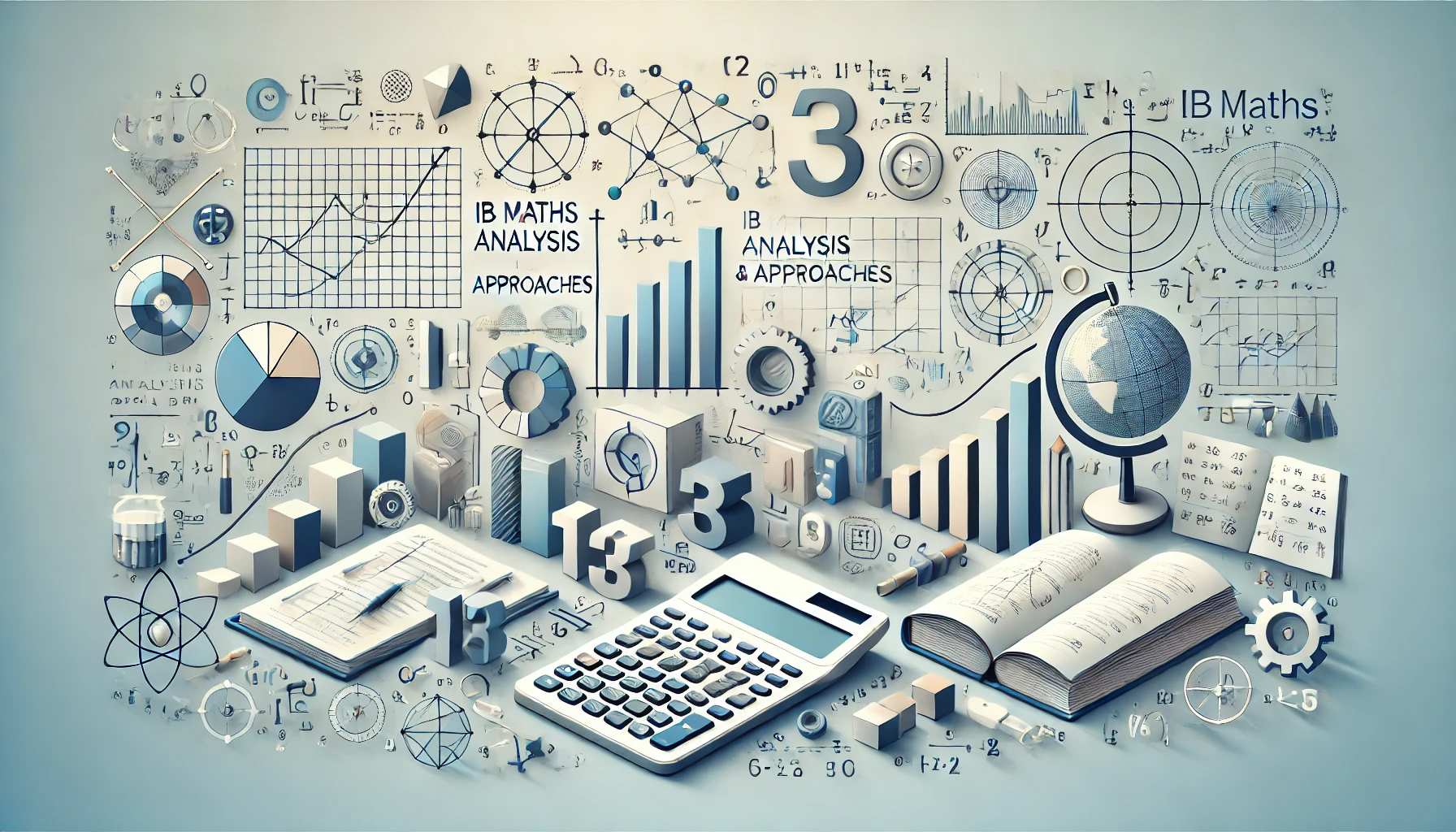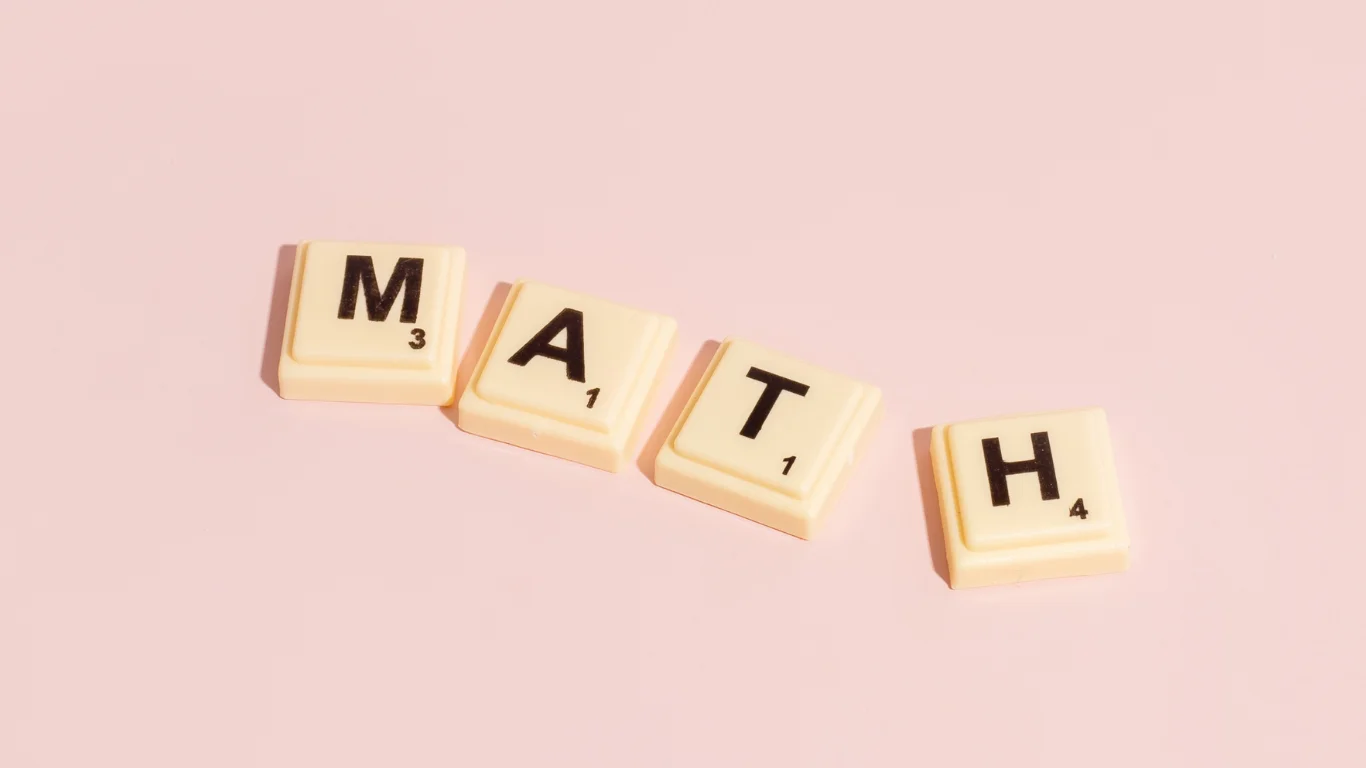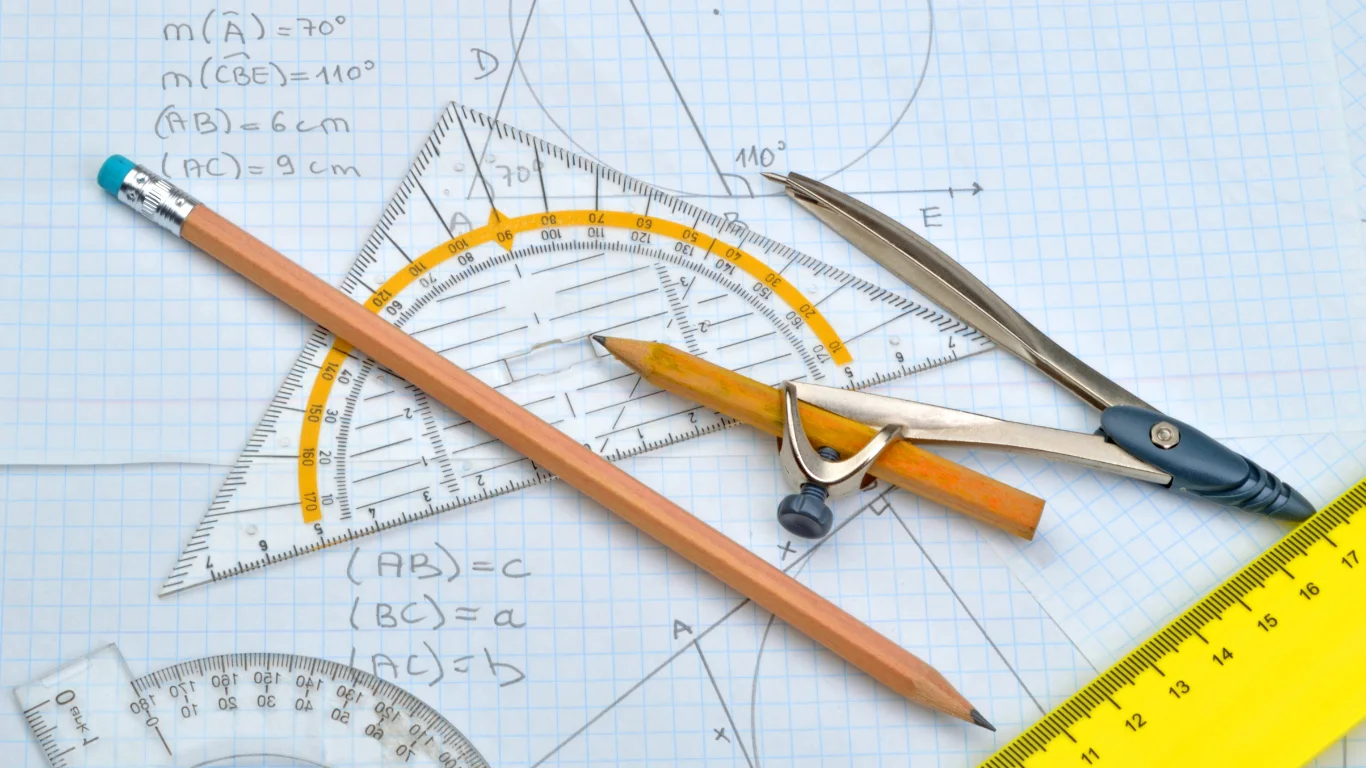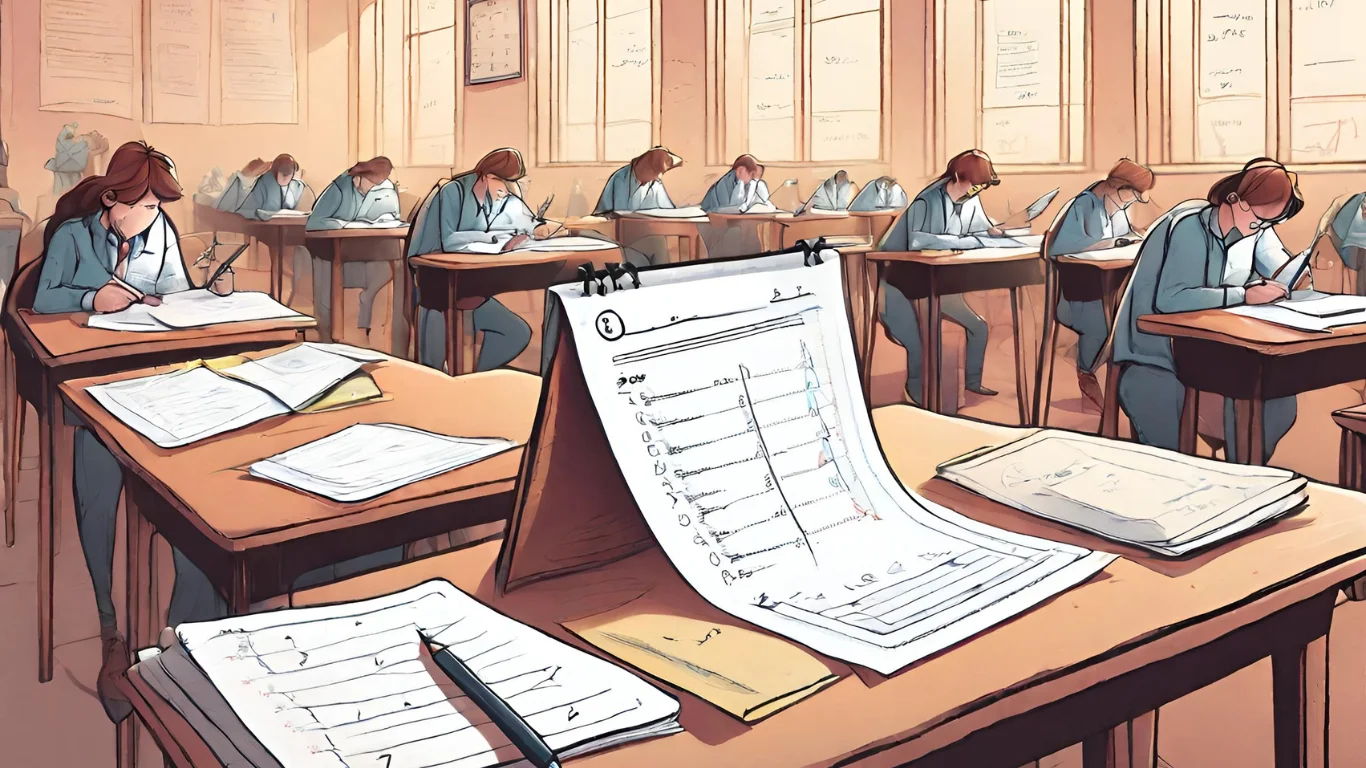
The International Baccalaureate (IB) Diploma Programme offers a world-class curriculum designed to prepare students for the challenges of higher education and global citizenship. Among its subjects, Mathematics: Analysis and Approaches (AA) stands out as a rigorous and dynamic course that caters to students who enjoy mathematical abstraction and problem-solving.
In this blog, we will explore the key features of IB Maths: Analysis and Approaches, delving into its structure, syllabus, and the skills it develops in learners. Whether you're a student considering this course or a parent looking to understand its value, this guide provides everything you need to know about one of the IB’s cornerstone subjects.
Structure of the IB Maths: Analysis and Approaches Course
The Mathematics: Analysis and Approaches (AA) course in the IB Diploma Programme is structured to provide students with a comprehensive understanding of mathematical concepts and their applications. The course is offered at two levels: Standard Level (SL) and Higher Level (HL), allowing students to choose the level that aligns with their academic interests, skills, and future aspirations.
Key Features of the Course
- Two Levels of Study:
- SL: Designed for students who wish to gain foundational mathematical knowledge for various academic and career paths.
- HL: Suitable for students aiming to delve deeper into mathematical theory and its abstract applications, particularly for STEM fields.
- Time Allocation:
- SL: 150 teaching hours.
- HL: 240 teaching hours.
- Core Components:
- Development of inquiry, modelling, and problem-solving skills.
- Emphasis on logical reasoning and mathematical communication.
- Use of technology as an integral tool for exploration and problem-solving.
- Assessment:
- A mix of external assessments (examinations) and an internal assessment (exploration project).
- Mathematical Exploration:
- Both SL and HL dedicate 30 hours to investigative and problem-solving skills, culminating in an individual exploration project.
Summary Table: IB Mathematics: Analysis and Approaches
Overview of Topic Organisation
The syllabus for IB Mathematics: Analysis and Approaches is divided into five core topics, with each topic further broken down into sub-topics. These sub-topics aim to develop mathematical understanding through conceptual frameworks, problem-solving skills, and real-world applications. Both Standard Level (SL) and Higher Level (HL) share common content, but HL explores the topics in greater depth and breadth. In addition, the syllabus includes a dedicated focus on mathematical exploration and the use of technology.
List of Topics
Topic 1: Number and Algebra
The "Number and Algebra" topic introduces students to foundational numerical concepts, techniques, and algebraic tools that underpin many areas of mathematics. This topic focuses on representing patterns, generalising results, and modelling real-world situations. For SL students, the content primarily covers sequences, series, and basic algebraic operations, while HL students explore advanced techniques such as proof by induction and the manipulation of complex numbers.
Key Concepts and Understandings
- Generalisation: Identifying patterns and making broader mathematical statements based on specific examples.
- Representation: Using different mathematical forms (e.g., numerical, graphical, and symbolic) to solve problems.
- Modelling: Applying mathematical frameworks like arithmetic or geometric sequences to real-world situations.
- Equivalence: Exploring different but equivalent forms of mathematical expressions or numbers for efficient problem-solving.
Topic 2: Functions
The "Functions" topic focuses on the concept of a function as a mathematical model that relates variables. Students learn to represent, analyse, and manipulate functions in various forms, including graphical, numerical, and symbolic representations. This topic is central to understanding mathematical relationships and modelling real-world phenomena. For HL students, the topic involves deeper exploration into transformations and properties of complex functions.
Key Concepts and Understandings
- Concept of a Function: Understanding functions as mappings between input and output values.
- Graphical Representation: Interpreting and sketching functions to identify their behaviour.
- Transformations: Exploring the effects of transformations such as translations, stretches, and reflections on functions.
- Modelling and Real-World Applications: Using functions to describe and predict real-world scenarios.

Topic 3: Geometry and Trigonometry
The "Geometry and Trigonometry" topic builds spatial reasoning and problem-solving skills, equipping students with tools to understand and solve problems in two- and three-dimensional spaces. This topic includes the study of angles, triangles, circles, and trigonometric functions. For HL students, the focus extends to more advanced concepts such as 3D geometry, vectors, and trigonometric proofs.
Key Concepts and Understandings
- Spatial Awareness: Understanding geometric relationships in both two and three dimensions.
- Trigonometric Functions: Using sine, cosine, and tangent to model periodic phenomena.
- Theoretical Applications: Exploring proofs, identities, and theorems.
- Vectors: Representing and solving spatial problems in 2D and 3D space (HL only).
Topic 4: Statistics and Probability
The "Statistics and Probability" topic introduces students to the principles of data analysis, interpretation, and probability. This topic develops essential skills for understanding uncertainty and variability, equipping students with tools to represent, summarise, and analyse data, as well as to calculate and interpret probabilities. HL students delve into advanced statistical techniques and probability distributions.
Key Concepts and Understandings
- Data Representation and Analysis: Organising and interpreting data using appropriate statistical measures.
- Probability: Understanding and calculating the likelihood of events, including compound and conditional probabilities.
- Mathematical Modelling: Applying statistical methods and probability distributions to solve real-world problems.
- Theoretical and Experimental Approaches: Connecting abstract probability with practical applications.
Topic 5: Calculus
The "Calculus" topic is a cornerstone of IB Mathematics, focusing on the study of rates of change, accumulation, and their applications. It develops students’ ability to model dynamic systems and solve problems involving change and optimisation. HL students explore more advanced calculus topics, including differential equations and further applications of integration.
Key Concepts and Understandings
- Limits and Continuity: Understanding the foundation of calculus through limits.
- Differentiation: Learning how to calculate derivatives and their real-world applications, such as rates of change and optimisation.
- Integration: Understanding integration as the reverse process of differentiation and as a tool for calculating areas and volumes.
- Modelling: Using calculus to model and solve real-world problems involving motion, growth, and optimisation.

Skills and Techniques Students Will Learn in IB Mathematics: Analysis and Approaches
The IB Mathematics: Analysis and Approaches course equips students with a wide range of skills and techniques that are essential for understanding mathematical concepts, solving complex problems, and applying mathematics in various contexts. These skills are developed progressively across the five syllabus topics, with an emphasis on critical thinking, inquiry, and communication.
Key Skills and Techniques
- Numerical and Algebraic Proficiency
- Manipulating algebraic expressions, including factorisation and expansion.
- Working with sequences and series, including arithmetic and geometric progressions.
- Solving systems of linear equations and inequalities.
- Understanding and applying exponential and logarithmic laws.
- Conceptual Understanding of Functions
- Defining and interpreting the concept of a function.
- Analysing different types of functions, including polynomial, rational, and trigonometric.
- Sketching and transforming graphs to represent real-world scenarios.
- Geometry and Trigonometry Skills
- Applying Pythagoras’ theorem and trigonometric identities.
- Solving problems involving angles, lengths, and areas in two and three dimensions.
- Understanding and using transformations such as translations, rotations, and enlargements.
- Statistical and Probabilistic Analysis
- Representing and analysing data using graphs, charts, and statistical measures.
- Calculating probabilities of single and combined events using Venn diagrams, tree diagrams, and combinatorics.
- Modelling and interpreting statistical data to identify trends and make predictions.
- Calculus Techniques
- Understanding derivatives as limits and their graphical interpretation.
- Differentiating functions and applying derivatives to real-world optimisation problems.
- Using integration for calculating areas, volumes, and solving differential equations.
- Problem-Solving and Modelling
- Developing models to represent real-life situations using mathematical frameworks.
- Exploring connections between mathematical concepts to approach problems systematically.
- Validating solutions and refining models based on critical reflection.
- Logical Reasoning and Proofs
- Constructing mathematical arguments through deductive reasoning.
- Learning proof techniques, such as induction, contradiction, and counterexamples.
- Understanding the importance of rigor and precision in mathematical reasoning.
- Use of Technology
- Employing graphing calculators, spreadsheets, and dynamic software to explore mathematical ideas.
- Using technology to test conjectures, visualise concepts, and solve equations.
- Integrating technology effectively into problem-solving strategies.
- Communication and Interpretation
- Recording and presenting mathematical methods, solutions, and reasoning clearly and concisely.
- Using appropriate mathematical notation and terminology in written and oral communication.
- Interpreting mathematical results in context and relating them to real-world scenarios.
💡Check out these five key habits and evidence-based strategies of high-achieving students in the IB.

Overview of the IB Maths: Analysis and Approaches Internal Assessment (IA)
The Internal Assessment (IA) for IB Mathematics: Analysis and Approaches is a significant component of the course. It provides students with an opportunity to independently explore a mathematical topic of their choosing. This process allows students to apply their knowledge creatively and demonstrate an understanding of mathematical concepts beyond the classroom setting.
What is Involved?
- Mathematical Exploration
- The IA consists of a mathematical exploration, which is a written piece of work where students investigate a specific area of mathematics.
- Students are encouraged to select a topic that interests them and allows for meaningful mathematical analysis and exploration.
- The exploration requires students to apply appropriate mathematical techniques to develop and answer their research question.
- Report Writing
- The IA is presented as a formal report, typically between 12 to 20 pages, including diagrams, graphs, and other mathematical representations.
- The report must clearly articulate all stages of the exploration, including introduction, methodology, analysis, and conclusions.
- Use of Technology
- Students are encouraged to use appropriate technology, such as graphing calculators or software, to aid their exploration and analysis.
- Authenticity and Academic Integrity
- Students must ensure that their work is original and adhere to the IB's academic honesty policy. Proper citations and references are required.
What is Being Assessed?
The Mathematical Exploration is assessed against five criteria, with a total maximum score of 20 marks:
- Criterion A: Presentation
- Assesses the coherence, structure, and organisation of the exploration.
- The report should include a clear introduction, logically developed sections, and a concise conclusion.
- Criterion B: Mathematical Communication
- Evaluates the use of appropriate mathematical language, symbols, and representations (e.g., graphs, equations, and diagrams).
- Key terms and variables must be defined clearly.
- Criterion C: Personal Engagement
- Measures the student’s personal interest, creativity, and independent thinking in their exploration.
- Demonstrating genuine curiosity and ownership of the work is essential.
- Criterion D: Reflection
- Assesses the student’s ability to critically reflect on their findings, evaluate the strengths and limitations of their work, and suggest improvements.
- Criterion E: Use of Mathematics
- Focuses on the depth, correctness, and appropriateness of the mathematics used.
- For SL students, the mathematics should be commensurate with the course level, while HL students are expected to demonstrate more advanced applications.
Key Features of the IA
- Duration: The IA typically takes 10 to 15 hours to complete, including time for research, drafting, and finalising the report.
- Weighting: The IA contributes 20% to the final grade for both SL and HL students.
- Purpose: The IA aims to develop independent research skills, encourage mathematical inquiry, and foster a deeper appreciation of mathematics as a discipline.

Overview of the IB Mathematics: Analysis and Approaches External Assessment
The external assessment for the IB Mathematics: Analysis and Approaches course consists of written examinations designed to evaluate a wide range of mathematical skills and knowledge. The structure differs slightly between Standard Level (SL) and Higher Level (HL) students, with HL involving more extended problem-solving and additional components.
Structure of External Assessment
Standard Level (SL)
Higher Level (HL)
What Is Being Assessed?
The external assessment measures student performance across the six assessment objectives:
- Knowledge and Understanding:
- Recall and use mathematical facts, concepts, and techniques in various contexts.
- Problem Solving:
- Apply knowledge to abstract and real-world problems using logical and systematic approaches.
- Communication and Interpretation:
- Use mathematical language, diagrams, graphs, and other representations to present solutions effectively.
- Technology:
- Employ technology appropriately to explore, interpret, and solve problems (specifically in calculator-allowed papers).
- Reasoning:
- Construct logical mathematical arguments and validate results through precise statements and deduction.
- Inquiry Approaches:
- Investigate novel situations, explore patterns, and test hypotheses.
Importance of Assessment Objectives
Each paper is designed to assess specific skills. For instance:
- Paper 1 focuses heavily on reasoning and analytic approaches without technology, encouraging depth of mathematical understanding.
- Paper 2 integrates technology, allowing students to solve complex problems that may involve graphical, numerical, or symbolic methods.
- Paper 3 (HL only) assesses students' ability to apply higher-order reasoning and inquiry-based approaches in unfamiliar contexts.
This alignment ensures that students demonstrate both foundational knowledge and advanced problem-solving capabilities, reflecting the comprehensive nature of the IB Diploma Programme.
Additional Relevant Information
- Use of Formula Booklet:
- All students are provided with a formula booklet during the examination.
- Grading:
- Marks are awarded for method, accuracy, and interpretation. Working steps must be shown, as correct answers without explanations may not earn full marks.
- Breadth vs. Depth:
- Papers aim to test the entire syllabus, but certain topics may be emphasised more than others in specific sessions.
💡Learn how each part of the IB grading system impacts your final diploma score.
Key Differences Between SL and HL in IB Mathematics: Analysis and Approaches
The Standard Level (SL) and Higher Level (HL) courses in Mathematics: Analysis and Approaches share a common foundation but differ in terms of depth, complexity, and teaching hours. The distinctions are designed to cater to students with different academic goals and interests.
Additional Insights
- Assessment Criteria:
- Both levels assess students on knowledge and understanding, problem-solving, mathematical communication, technology usage, reasoning, and inquiry.
- HL exams require more sophisticated reasoning and problem-solving approaches.
- Workload and Expectations:
- HL demands more time, effort, and a deeper conceptual understanding of mathematical principles compared to SL.
- Purpose of the Levels:
- SL is designed for students who need mathematics as a support subject for their higher education.
- HL is tailored for those who require mathematics as a core component of their future studies, especially in fields like engineering, physics, or computer science.
How to Succeed in IB Maths: Analysis and Approaches
We have spoken to our tutors and summarised their advice about how to succeed in IB Maths AA. Here are their top tips to help you excel in this challenging subject and perform well in your final exams:
General Tips for IB Maths AA
- Understand the Concepts, Not Just the Procedures
- Focus on understanding the "why" behind mathematical concepts, as this will help you solve unfamiliar problems more effectively.
- Stay Organised with the Syllabus
- Regularly review the syllabus topics to ensure you have covered all required content for your level (SL or HL).
- Practice Regularly
- Solve a variety of problems, including textbook exercises, past papers, and additional resources, to build confidence and fluency.
- Master Your Calculator
- Familiarise yourself with your graphing calculator's functions and shortcuts. Efficient use of technology is essential, especially in calculator-allowed papers.
- Engage with Real-World Applications
- Explore how mathematics is applied in real-world contexts, as many IA and exam questions involve practical scenarios.
- Develop Mathematical Communication Skills
- Practice presenting solutions clearly with correct notation, logical steps, and diagrams. Marks are awarded for clarity and precision in communication.
- Strengthen Problem-Solving Skills
- Work on problems that require critical thinking and multi-step reasoning. This is particularly important for HL students.
- Reflect and Evaluate
- After solving problems, reflect on your process and evaluate your solutions to identify areas for improvement.
- Use the Formula Booklet Wisely
- Familiarise yourself with the formula booklet early on so you can quickly locate and apply relevant formulas during exams.
- Work on Proofs
- For HL students, practice different types of proofs (e.g., induction, contradiction) as these are emphasised in the curriculum.
💡Check out these effective study techniques that support learning, retention, and academic achievement.

Tips for the Final Exams
- Know the Exam Structure: Understand the format, duration, and weighting of each paper for your level. Allocate time during practice sessions to mirror exam conditions.
- Revise All Topic: Ensure you have a solid grasp of every syllabus topic. Exams are designed to cover the entire syllabus, so avoid leaving gaps in your knowledge.
- Focus on Common Question Types: Identify common question types and themes from past papers to better understand what examiners expect.
- Time Management During Exams: Allocate time based on marks per question. Don’t spend too much time on one question; move on and come back if you have time.
- Read Questions Carefully: Pay attention to command terms (e.g., "justify," "prove," "sketch") and make sure you address every part of the question.
- Check Your Work: Reserve time at the end of each paper to review your answers, check calculations, and ensure you’ve addressed all parts of each question.
- Use Technology Effectively: For calculator-allowed papers, verify results using technology when appropriate but show all necessary steps to receive full marks.
- Work on Past Papers: Simulate exam conditions by solving past papers within the time limit. This will improve your stamina, speed, and familiarity with the format.
- Review Mark Schemes: Study mark schemes to understand how marks are awarded and align your solutions with examiner expectations.
- Stay Calm and Confident: During exams, approach each question methodically. Even if you don’t know the full solution, attempt every question to earn partial marks.
💡Practice papers are key for success! Find out why past papers are the ultimate tool for IB Exam preparation.
Common Mistakes IB Maths AA Students Make
Even the most diligent students can make errors in IB Mathematics: Analysis and Approaches. Avoiding these common pitfalls can significantly improve your performance:
- Focusing on Memorisation Over Understanding: Relying solely on memorising formulas and methods without understanding the underlying concepts can lead to struggles with unfamiliar problems.
- Neglecting the Use of Technology: Not practising with graphing calculators or failing to use them effectively during exams can result in missed opportunities to check solutions or visualise problems.
- Ignoring Command Terms: Misinterpreting or overlooking terms like "justify," "prove," or "evaluate" can lead to incomplete or incorrect answers.
- Skipping Steps in Problem Solving: Students often lose marks for not showing their working. Even if the final answer is correct, clear steps are essential to earn full credit.
- Poor Time Management: Spending too long on one question during exams can leave insufficient time for the rest, lowering overall scores.
- Underestimating the IA: Treating the Internal Assessment as an afterthought or procrastinating can lead to rushed work, which undermines personal engagement and quality.
- Inconsistent Practice: Only practising specific types of problems or neglecting certain syllabus areas can result in weak spots in your understanding.
- Overlooking Mistakes: Failing to review and learn from errors in practice problems or past papers means missing opportunities to improve.

FAQs About IB Mathematics: Analysis and Approaches
Here are some frequently asked questions about IB Maths AA to help clarify common concerns:
- What is the difference between SL and HL in IB Maths AA?
- SL focuses on fundamental concepts and applications, while HL delves deeper into abstract and complex mathematics. HL also includes an additional paper and more challenging content.
- Is getting a 7 in IB Maths AA hard?
- Achieving a 7 requires strong conceptual understanding, consistent practice, and excellent problem-solving skills. While it is challenging, with the right approach and dedication, it is attainable.
- How much time should I dedicate to studying Maths AA?
- Regular practice is key. Aim for at least a few hours a week, increasing closer to exams. For HL students, more time may be necessary due to the depth of the content.
- What tools do I need for the course?
- A graphing calculator approved by the IB is essential. Additionally, familiarity with graphing software or spreadsheets can be helpful for both the IA and exams.
- How can I prepare for the Maths AA exams?
- Practice past papers under timed conditions, review the syllabus thoroughly, and ensure you are comfortable with both calculator and non-calculator problems.
- What if I don’t understand a topic?
- Seek help early from your teacher, tutor, or classmates. Use online resources or revisit the syllabus guide for clarification. Consistent effort to fill gaps in understanding is crucial for success.
Conclusion
IB Mathematics: Analysis and Approaches is a challenging yet rewarding course that equips students with critical thinking skills, problem-solving abilities, and a deeper understanding of mathematics. Whether you are studying at Standard Level or Higher Level, success in this course requires dedication, consistent practice, and a genuine interest in exploring mathematical concepts.
Remember, Maths AA is not just about numbers; it's about developing the tools to solve real-world problems and think analytically in any context.
With the right mindset, strategies, and support, excelling in IB Maths AA is entirely within your reach. Good luck, and enjoy the journey of mastering mathematics!
